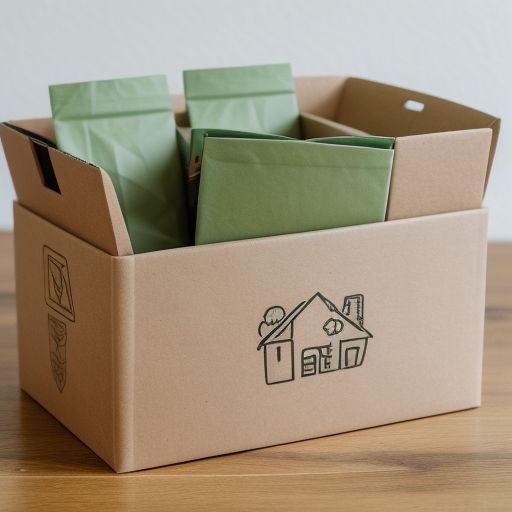
As consumers become increasingly eco-conscious, the demand for sustainable practices in every industry is on the rise. For small businesses, adopting sustainable packaging for small businesses is more than just an environmental responsibility—it’s a strategic move that can attract customers, reduce costs, and build a strong brand reputation. If you’re a small business owner, this guide will walk you through the benefits of sustainable packaging, innovative ideas, and how to get started.
Sustainable packaging refers to materials and methods that minimize environmental impact, often using renewable, biodegradable, or recyclable materials. For small businesses, adopting sustainable packaging can have a significant impact on their operations and the planet.
Using sustainable materials helps reduce waste, conserve resources, and minimize your carbon footprint.
Aligning your business with sustainability resonates with customers and differentiates you from competitors.
While sustainable packaging may have higher upfront costs, it often leads to savings through reduced waste, lighter materials, and bulk purchases.
Consumers are more likely to support businesses that align with their values, leading to repeat purchases and positive reviews.
Packaging made from materials like cornstarch, bamboo, or kraft paper breaks down naturally in composting conditions.
Cardboard, paper, and certain plastics can be easily recycled, reducing waste.
Materials like plant-based plastics or biodegradable film decompose naturally over time.
Durable materials encourage customers to reuse packaging instead of discarding it.
Reducing unnecessary materials helps minimize waste while cutting costs.
Assess Your Existing Packaging Requirements
Gather information about the kinds of items you sell, as well as the types of packaging they require. Think about things like fragility, size and storage conditions.
Research Eco-Friendly Suppliers for Your Occasion
Work with suppliers who have diverse sustainable packaging options at affordable prices.
(Here’s a pro tip: you can often look for certifications, such as FSC (Forest Stewardship Council) or BPI (Biodegradable Products Institute), which can point you toward trusted eco-friendly materials.)
Educate Your Customers
Tell your audience that you are committed to sustainability on your website, product labels and social media. Give directions for recycling or your packaging in particular
Test and Iterate
Test a small batch of sustainable packaging in order to gauge customer feedback and operational logistics. Make adjustments as needed.
Track Your Impact
To measure the success of your sustainable packaging strategy, monitor metrics such as reduction in packaging waste, improvements in customer satisfaction, and cost savings.
Innovative Sustainable Packaging Ideas for Small Businesses
Seed-Embedded Packaging
Use plant’ inserted with seeds to customers plant after use.
Best For: Environmentally conscious brands in search of a lasting impact.
Edible Packaging
Instead of throwing out the unneeded snacks they offer edible options for certain food products.
Ideal For: Bakeries, restaurant and food products.
Water-Soluble Packaging
Use materials that are water soluble and leave no waste.
Best For: Picked up cleaning products and single-use products
Recycled Cushioning
Use shredded paper, corrugated inserts or biodegradable peanuts instead of plastic bubble wrap.
Best For: Items that may break, like glassware or electronics.
The Identification of Obstacles and Solutions in Sustainable Packaging Adoption
Higher Initial Costs
And eco-friendly materials might be more expensive upfront.
Solution: Buy in bulk, negotiate with suppliers and emphasize the long-term savings of minimizing waste and increasing shipping efficiency.
Limited Availability
Some sustainable materials are not commercially available.
Solution: Use local suppliers or get creative with packaging that works for your products.
Consumer Education
Not every consumer understands how to dispose of a sustainable package correctly.
Solution: Put clear recycling or composting instructions on your packaging.
Q: What is sustainable packaging?
A: Sustainable packaging uses materials that are renewable, biodegradable, recyclable, or reusable, reducing environmental impact.
Q: Is sustainable packaging cost-effective for small businesses?
A: While the initial costs may be higher, long-term savings from reduced waste and lighter materials can offset expenses.
Q: How can I find eco-friendly packaging suppliers?
A: Look for suppliers online, attend trade shows, or join industry networks focused on sustainability.
Q: Can sustainable packaging work for all types of products?
A: Yes, with the variety of options available, sustainable packaging can be customized for different product needs.
Q: How does sustainable packaging improve customer loyalty?
A: Customers appreciate businesses that align with their values, making them more likely to return and recommend your brand.
For small businesses, adopting sustainable packaging isn’t just a trend—it’s a necessity. By prioritizing eco-friendly materials and practices, you can align with consumer values, reduce your environmental impact, and strengthen your brand. The transition may take some effort, but the rewards in customer loyalty, cost savings, and environmental impact make it worthwhile.